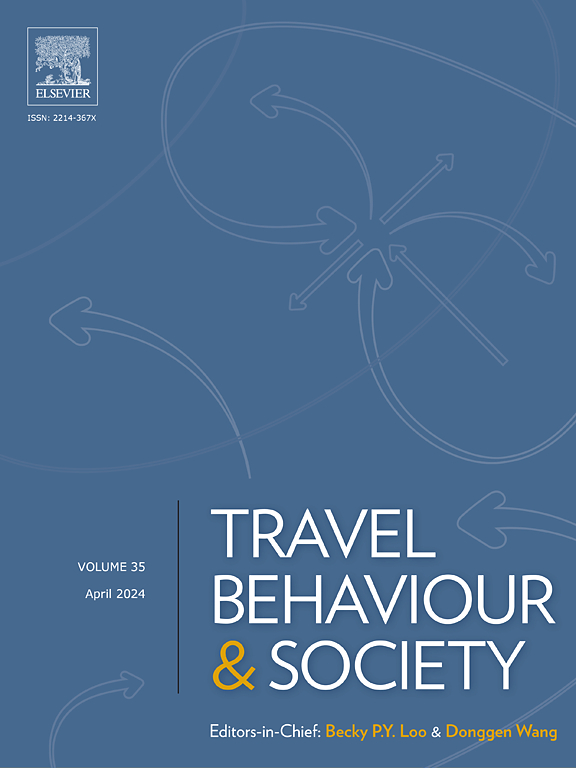What promotes the integration of metro and ridesourcing? Analysis of first/last mile ridesourcing origin–destination trips
IF 5.1
2区 工程技术
Q1 TRANSPORTATION
引用次数: 0
Abstract
Shared mobility can be regarded as a possible solution for sustainable transportation across the world. The integration between shared mobility and metro systems can relieve severe social and environmental issues. Although studies on integrating metro services and ridesourcing have gradually increased, those focusing on access/egress origin–destination trips are rather limited. Those focusing on access/egress origin–destination trips are rather limited. This study employs XGBoost models to examine the impact of trip distance, as well as the origin and destination factors, on the metro-ridesourcing integrated access/egress trips during weekday morning and evening peak hours using ridesourcing trip record data in Nanjing, China. Most factors have similar effects on metro-ridesourcing integrated usage, regardless of type differences and temporal heterogeneity. For example, all four types of integrated usage are positively associated with the density of bike-sharing services at both metro station sides and Traffic Analysis Zone (TAZ) sides. An interesting finding is that symmetric effects are found regarding the distance of TAZs to the city center, TAZ-side employment density, residence density, and population-to-employment balance index. The association between these factors and morning-peak access usage is similar to that for evening-peak egress usage, and morning-peak egress usage shares similar patterns with evening-peak access usage. Understanding how the influencing factors affect different types of metro-ridesourcing integrated usage can gain refined results and thus provide targeted policies to policymakers and shared mobility operators to further promote multimodal metro use.
是什么推动了地铁与网约车的融合?第一/最后一公里拼车出发地行程分析
共享出行可以被视为全球可持续交通的一种可能解决方案。共享交通和地铁系统的融合可以缓解严重的社会和环境问题。虽然整合地铁服务和拼车的研究逐渐增多,但关注出入口始发目的地行程的研究却相当有限。那些侧重于进出始发目的地旅行的项目相当有限。本研究采用XGBoost模型,研究了出行距离、出发地因素和目的地因素对南京市工作日早晚高峰时段地铁拼车综合出入口出行的影响。无论类型差异和时间异质性如何,大多数因素对地铁拼车综合使用都有相似的影响。例如,所有四种类型的综合使用都与地铁站两侧和交通分析区(TAZ)两侧的共享单车服务密度呈正相关。一个有趣的发现是,在taz到市中心的距离、taz侧的就业密度、居住密度和人口与就业平衡指数上发现了对称效应。这些因素与早高峰访问使用之间的关联与晚高峰出口使用之间的关联类似,并且早高峰出口使用与晚高峰访问使用具有相似的模式。了解影响因素如何影响不同类型的地铁拼车综合使用,可以获得更精细的结果,从而为政策制定者和共享出行运营商提供有针对性的政策,进一步促进地铁的多模式使用。
本文章由计算机程序翻译,如有差异,请以英文原文为准。
求助全文
约1分钟内获得全文
求助全文
来源期刊

Travel Behaviour and Society
TRANSPORTATION-
CiteScore
9.80
自引率
7.70%
发文量
109
期刊介绍:
Travel Behaviour and Society is an interdisciplinary journal publishing high-quality original papers which report leading edge research in theories, methodologies and applications concerning transportation issues and challenges which involve the social and spatial dimensions. In particular, it provides a discussion forum for major research in travel behaviour, transportation infrastructure, transportation and environmental issues, mobility and social sustainability, transportation geographic information systems (TGIS), transportation and quality of life, transportation data collection and analysis, etc.
 求助内容:
求助内容: 应助结果提醒方式:
应助结果提醒方式:


